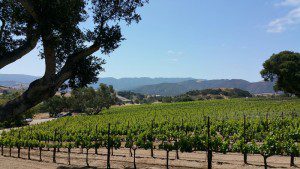Beckmen’s biodynamic farming in Santa Barbara County
I first met Steve Beckmen of Beckmen Vineyards almost 20 years ago. He was one of the first people I heard speak about biodynamic farming. Twenty years later, we sat down and tasted his wines. The maturity of the vineyards and the passion of Steve come through in the balance and complexity of the wines and you can read my story that I wrote in the Napa Valley Register below her.
 When I first started in the wine business almost 20 years ago, I would take consumers on day trips from Los Angeles to the Santa Barbara wine country for a day of tasting and education. We would visit different wineries and the winemakers would meet with our group to share their stories.
When I first started in the wine business almost 20 years ago, I would take consumers on day trips from Los Angeles to the Santa Barbara wine country for a day of tasting and education. We would visit different wineries and the winemakers would meet with our group to share their stories.
 When I first started in the wine business almost 20 years ago, I would take consumers on day trips from Los Angeles to the Santa Barbara wine country for a day of tasting and education. We would visit different wineries and the winemakers would meet with our group to share their stories.
When I first started in the wine business almost 20 years ago, I would take consumers on day trips from Los Angeles to the Santa Barbara wine country for a day of tasting and education. We would visit different wineries and the winemakers would meet with our group to share their stories.
11 July, 2019






